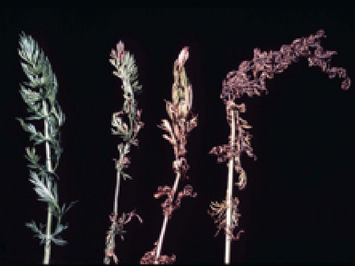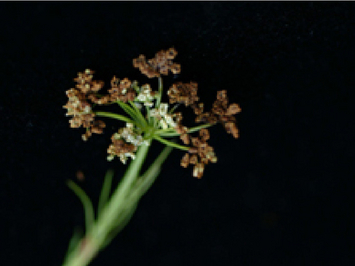Anthracnose of caraway
Mycocentrospora acerina
Profile
Caraway anthracnose is caused by the fungus Mycocentrospora acerina. Moderate temperatures, abundant rainfall and associated high humidity promote a massive occurrence. Infected are stems and leaves, but under extremely humid conditions also the flowers. The infestation can cause discoloration and wilting of the plant.
Damage symptoms


On caraway, primary infections occur at the time of plant shooting. Reddish-brown spots form on the stems and may eventually cover the entire stem. The spots may also be somewhat sunken and dark bordered. Such spots also form on the petioles.
Initially roundish, later irregular, brown spots develop on the leaves, turning blackish brown. The leaves look as if they have been burned. Affected leaves wilt, and eventually the stems wilt as well. Young plants and annuals may die completely. Infestation on flowers is noticeable because the petals turn brown and rot, especially in wet and humid weather. The fungus can also spread to the fruit, resulting in the formation of "pits" or, in the case of severe infestation, complete failure of fruit formation. In any case, quality losses are to be expected during harvest.
Prevention and control
- In the case of minor leaf infestation, assess whether the infestation is worthy of control.
- In case of heavy infestation of the foliage and, if necessary, the flowers, treat in time with plant protection products (see list of plant protection products approved in Austria).
Last updated: 14.01.2022
automatically translated